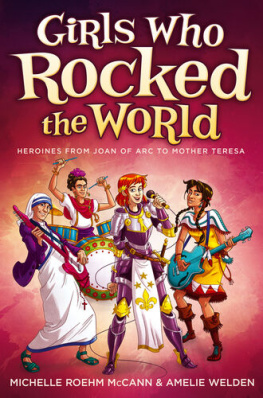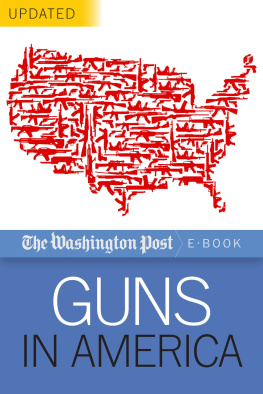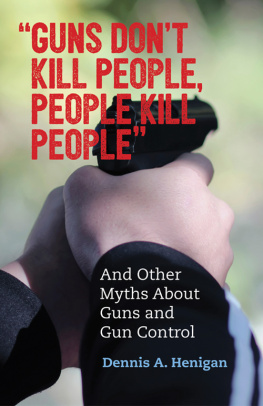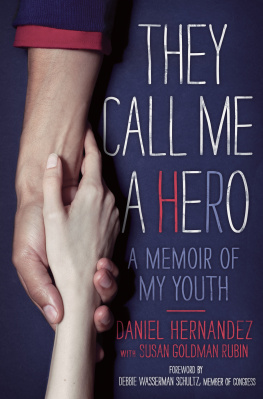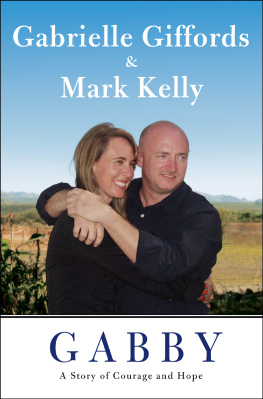
Also by Gabrielle Giffords and Mark Kelly:
Gabby: A Story of Courage and Hope

Scribner
A Division of Simon & Schuster, Inc.
1230 Avenue of the Americas
New York, NY 10020
Copyright 2014 by Gabrielle Giffords and Mark E. Kelly
All rights reserved, including the right to reproduce this book or portions
thereof in any form whatsoever. For information, address Scribner Subsidiary Rights Department, 1230 Avenue of the Americas, New York, NY 10020.
First Scribner hardcover edition October 2014
SCRIBNER and design are registered trademarks of The Gale Group, Inc.,
used under license by Simon & Schuster, Inc., the publisher of this work.
For information about special discounts for bulk purchases,
please contact Simon & Schuster Special Sales at 1-866-506-1949
or business@simonandschuster.com.
The Simon & Schuster Speakers Bureau can bring authors to your live event.
For more information or to book an event, contact the Simon & Schuster Speakers Bureau at 1-866-248-3049 or visit our website at www.simonspeakers.com.
Interior design by Erich Hobbing
Jacket design by Eric White
Jacket photographs: front The Washington Post /Contributor/Getty Images;
back Eric Elofson (Revolution Messaging)
Manufactured in the United States of America
1 3 5 7 9 10 8 6 4 2
Library of Congress Cataloging-in-Publication Data is available.
ISBN 978-1-4767-5007-1
ISBN 978-1-4767-5011-8 (ebook)
In memory of
Charlotte Bacon
Daniel Barden
Rachel DAvino
Olivia Engel
Josephine Gay
Dawn Hochsprung
Dylan Hockley
Madeleine Hsu
Catherine Hubbard
Chase Kowalski
Jesse Lewis
Ana M rquez-Greene
James Mattioli
Grace McDonnell
Anne Marie Murphy
Emilie Parker
Jack Pinto
Noah Pozner
Caroline Previdi
Jessica Rekos
Avielle Richman
Lauren Rousseau
Mary Sherlach
Victoria Soto
Benjamin Wheeler
Allison Wyatt
ENOUGH
INTRODUCTION
W e are a reasonable people, we Americans.
We share common goals: life, liberty, and the pursuit of happiness. Those words have knit us together since 1776. They spelled out who we were then. They are just as uplifting and foundational today.
Our diversity has made us a bigger-hearted people. Regardless of our religion or skin color or political allegiances, we are all Americans, and we come together to root for our favorite sports teams and watch fireworks on July 4. We vote and we pay taxes, and we send our kids to school every morning with the expectation that theyll return to us that night safe, happy, and maybe a little smarter.
We have remained intact, weathering the inevitable disagreements of a strong democracy, for over two hundred years, through wars and peacetime, recessions and prosperity, struggles over civil rights and equality.
But Gabby and I fear the country has veered off course when it comes to one important issue: how we relate to guns. A basic freedom that both Gabby and I wholeheartedly embrace, the right to bear arms, has become radicalized.
When guns get in the hands of the wrong people, as has happened all too often in recent years, they can transform even the safest placesa movie theater, a place of worship, a school, a shopping centerinto combat zones. More and more over the past decades, guns have not only been used to keep the peace, but to rob us of our peace.
Gabby and I came face-to-face with the most horrific aspects of Americas gun-violence problem on the morning of January 8, 2011. As Gabby was meeting with constituents in a Tucson shopping center, a young man wielding a semiautomatic handgun shot her in the head at close range. In fewer than fifteen seconds, he murdered six people, including Arizonas chief federal judge and a nine-year-old girl, and wounded sixteen others.
***
For the next two years, the most basic life-or-death questions consumed our family: Would Gabby survive the bullet through her brain? Would she walk again? Smile that smile that won my heart? Speak? Hug her friends?
Miraculouslybut with great difficulty and much painful workGabby has prevailed over the injury to her brain. We have shared joy and frustration, wins and losses along the way. Doctors, friends, family, and Americans everywhere helped us through the hardest moments, and they remain essential to my wifes continued well-being.
All along the way, Gabbys ongoing recovery has compelled us to ask larger questions that confront us as a nation, and time and time again we returned to the subject of guns.
What can we do to protect innocent Americans from the mass shootings that have become so commonplace in the years before and after Gabby was shot in Tucson? These tragedies are forever imprinted in our national consciousness: Virginia Tech, Aurora, Newtown, the Washington Navy Yard, Fort Hoodand these are only recent examples.
Mass shootings, however, mask the toll of everyday gun violence that is horrifying in its banal frequency. More than thirty-one thousand Americans died by gunfire in 2010, over a third of these homicides. Add nonfatal wounds, and you have a national nightmareone that makes our country stand out in the worst ways. The US rate of firearm homicide for children ages five to fourteen is thirteen times higher than in any other developed nation. Our gun-murder rate is about fifteen to twenty times the average of countries like France, Italy, Japan, and the United Kingdom.
Why does this keep happening? Why are we just sitting back and watching while more and more innocent Americans lose their lives to gun violence?
Gabby and I started to wonder if perhaps reasonable peoplethe overwhelming majority of us, after allmight be able to band together to make our country less dangerous. We began to ask ourselves: What can we do to keep guns out of the hands of people who cannot be trusted with firearms? How can we preserve the rights of law-abiding citizens to own guns for hunting and self-protection while keeping them away from criminals and the dangerously mentally ill?
How can we give law enforcement the tools it needs to stop guns from being traded illegally by unscrupulous dealers? To bring criminals to justice by tracing guns used in crimes, and to make it harder for known stalkers and domestic abusers to acquire guns?
***
After Tucson and the shootings that have followed, Gabby and I have returned to these questions again and again. She and I had dedicated our lives to public service, out of love and duty. Our work is not yet done.
Gabby entered politics in 2000 when she was elected to the Arizona House of Representatives. Then, at just thirty-two, she became the youngest woman elected to the Arizona Senate. The voters of Tucson and Arizonas Eighth Congressional District elected her to Congress in 2006. They reelected her in 2008 and 2010. As Congress convened on January 6, 2011, Gabby read the First Amendment of the Constitution on the House floor. Two days later, she was shot in the head.
I joined the United States Navy and started flight school in 1986 in Pensacola. I qualified as a sharpshooter while at the US Merchant Marine Academy and later as an expert marksman in the Navy. I flew thirty-nine combat missions over Iraq and Kuwait in the first Gulf War. I went on to become a test pilot and then an astronaut, piloted two space shuttle missions and commanded two more, and spent more than fifty days in space.
Next page

